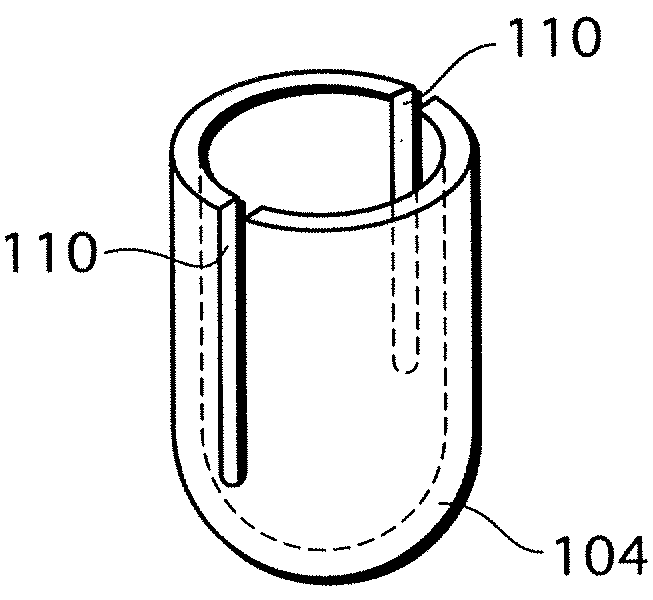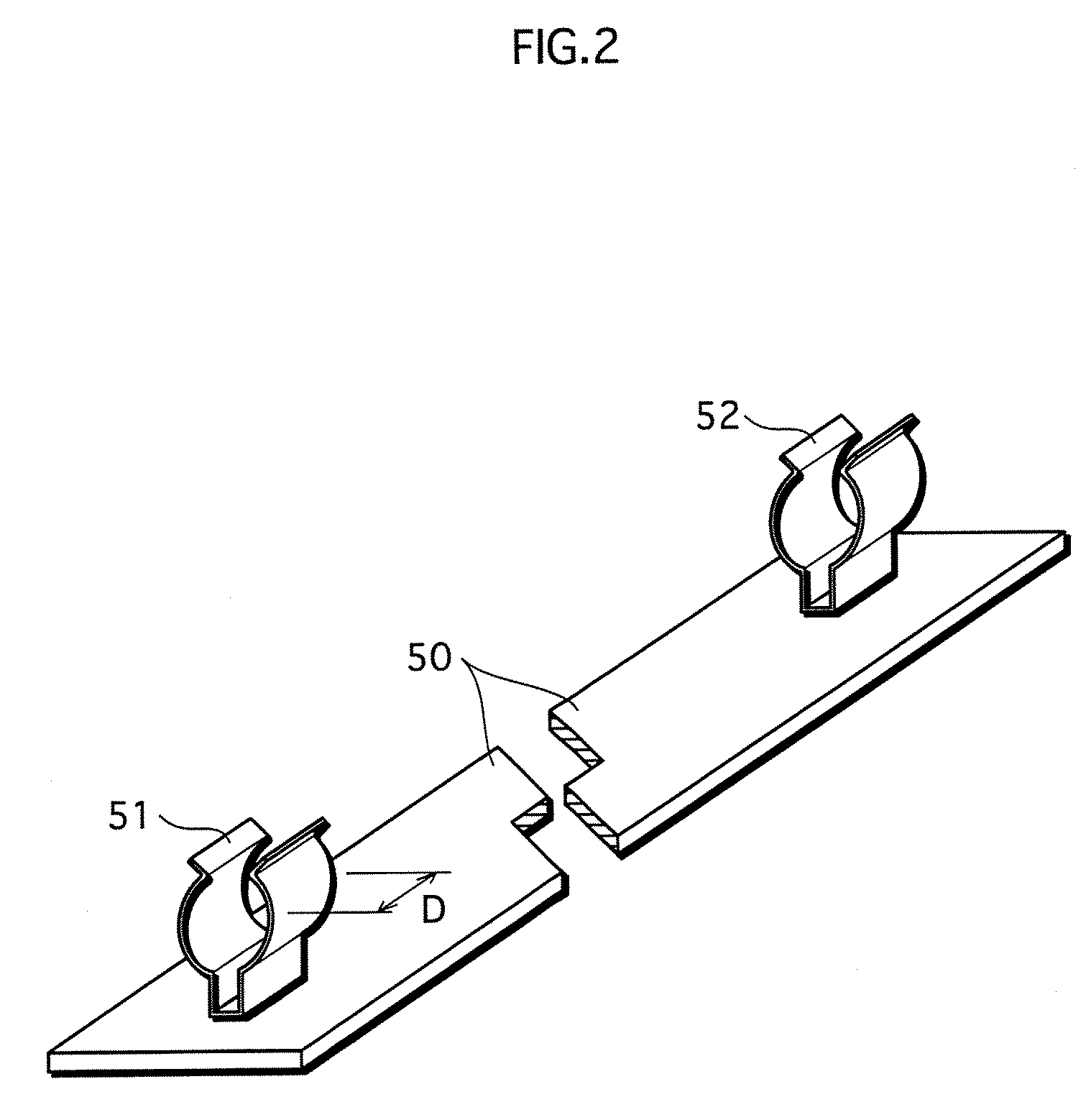Fluorescent Lamp, Backlight Unit and Liquid Crystal Television
- Summary
- Abstract
- Description
- Claims
- Application Information
AI Technical Summary
Benefits of technology
Problems solved by technology
Method used
Image
Examples
first embodiment
[0053]FIG. 1 shows an overview of a liquid crystal television pertaining to a first embodiment of the present invention.
[0054]A liquid crystal television 10 shown in FIG. 1 is, for example, a 32-inch liquid crystal television, and includes a liquid crystal display unit 11 and a backlight unit 12.
[0055]The liquid crystal display unit 11 is composed of a color filter substrate, a liquid crystal, a TFT substrate, a drive module (not illustrated) etc., and forms color images based on an external image signal.
[0056]The backlight unit 12 is an LCBL unit and composed of one high-frequency electronic ballast 13 and sixteen dielectric barrier discharge lamps 100 (hereafter, simply “fluorescent lamp 100”).
[0057]The high-frequency electronic ballast 13 is a lighting circuit that operates all of the sixteen fluorescent lamps 100.
[0058]A socket board 50 shown in FIG. 2 has electrode sockets 51 and 52 made of elastic stainless steel, phosphor bronze, etc. The electrode sockets 51 and 52 hold both...
second embodiment
[0123]In the above-described first embodiment, the phosphor layer 106 is provided directly on the inner surface of the glass bulb 101. In contrast, a dielectric barrier discharge lamp pertaining to the second embodiment has a protective layer and a phosphor layer provided on an inner surface thereof in listed order.
[0124]FIG. 7 shows an overview of a dielectric barrier discharge lamp 200 pertaining to the second embodiment.
[0125]The lamp 200 in FIG. 7 is constructed fundamentally the same as the fluorescent lamp 100 in FIG. 3. Although the elements shown in FIG. 3 are numbered 100s while the elements shown in FIG. 7 are numbered 200s, numbers of the corresponding elements have the same last two figures for the sake of simple explanation.
[0126]The lamp 200 has a tube-shaped glass bulb 201.
[0127]A protective layer 211 and a phosphor layer 206 are provided, in listed order, on the inner surface of the glass bulb. More specifically, the phosphor layer 206 is provided on the protective l...
modification 1
(Modification 1)
[0133]Described below is a modification example, modification 1, pertaining to the second embodiment with regard to the best characteristic of the protective layer, a shape of the outer surface of the glass bulb, and so on.
[0134]FIG. 8 shows an overview of an external electrode fluorescent lamp 400 pertaining to modification 1 of the second embodiment.
[0135]In a discharge space 406 of a glass bulb 401, mercury 407 exists as a light-emitting material.
[0136]A protective layer 404 and a phosphor layer 405 are provided on an inner surface of the glass bulb 401 in listed order.
[0137]External electrodes 402 and 403 are made by applying conductive layers 408 and 409 on outer surfaces of end portions of the glass bulb 401. These outer surfaces have been blast-treated to get roughened, are referred to as rough surfaces 401a and 401b, and have a surface roughness of 1 μm to 3 μm inclusive.
[0138]The conductive layers 408 and 409 have a maximum thickness of 70 μm or less. Layer ...
PUM
| Property | Measurement | Unit |
|---|---|---|
| Fraction | aaaaa | aaaaa |
| Fraction | aaaaa | aaaaa |
| Thickness | aaaaa | aaaaa |
Abstract
Description
Claims
Application Information
 Login to View More
Login to View More - R&D
- Intellectual Property
- Life Sciences
- Materials
- Tech Scout
- Unparalleled Data Quality
- Higher Quality Content
- 60% Fewer Hallucinations
Browse by: Latest US Patents, China's latest patents, Technical Efficacy Thesaurus, Application Domain, Technology Topic, Popular Technical Reports.
© 2025 PatSnap. All rights reserved.Legal|Privacy policy|Modern Slavery Act Transparency Statement|Sitemap|About US| Contact US: help@patsnap.com



